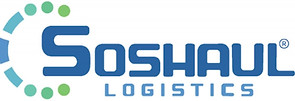What Are the Documents Needed To Haul Freight Across the Mexico-United States Border?
- Samantha Allen

- Nov 23, 2023
- 3 min read
Looking to haul freight across the Mexican border? Here are the documents you will need!

Letter of Instructions
Bill of Lading (signed by the buyer and carrier with details about the goods sold, place of origin and other details about the shipment)
Commercial Invoice (Pedimentos in Spanish)
Document of Operations for Customs Clearance (DODA)
Sales Contract
Customs Declaration
Proof of Insurance
AES Filing (used for collecting export trade data)
USMCA Certificate of Origin (if applicable)
Proforma of Commercial Invoice
Packing List (details the contents of shipment)
Driver will need the recipient’s company name, full address, phone number, tax ID/RFC number, contact name, contact email address and delivery number.
What is a Bill of Lading (BOL)?
A Bill of Lading is a contract of carriage between the shipper (party that wants to ship the goods) and the carrier (party that will physically transport the goods). It acts as a receipt of goods and title to the goods. A BOL describes the nature of the cargo, the amount of cargo by weight, the size and/or number of pieces, the party to be paid for the transportation services, and the origin and destination of the cargo. Essentially, the BOL answers the who, what, where, when, and why of the shipment. Learn more and download a FREE BOL template here.
What is a Document of Operations for Customs Clearance (DODA)?
Also known as the Documento de Operación para Despacho Aduanero, the DODA is an effort to streamline import and export processes by the Mexican government using electronic systems. The DODA is created from the following information:
Transport identification number (plates)
Customs and section CAAT number, Carrier's Harmonized Alphanumeric Code (Mexico’s version of SCAC)
Operation Type
The paid and validated commercial invoice (also known as pedimentos)
Once generated by a customs broker, legal representative, or agent representative, the DODA will include:
A QR code
Electronic signature of the Customs Agent
The stamp of the Mexican Tax Administration Service (SAT)
What is a Customs Declaration?
A customs declaration includes details such as the nature of the goods, their value, quantity, origin, and other relevant information. Customs declarations are required by customs authorities to assess duties and taxes and ensure compliance with regulations.
What is an AES filing?
AES stands for Automated Export System. AES is the export component of the Automated Commercial Environment (ACE). The AES is a system used by U.S. exporters to declare their exports to help the government compile data for trade and export statistics, also known as Electronic Export Information (EEI). Your EEI includes your name, address, identification number, and detailed information like classification and licensing requirements for the products. AES filing refers to the electronic submission of export information through the AES. It is mandatory for most shipments valued “more than $2,500 per Schedule B number to anywhere other than Canada or goods that require an export license” (USCBP).
What is a USMCA Certificate of Origin?
The USMCA Certificate of Origin is a document that provides preferential treatment for goods under the United States-Mexico-Canada Agreement (USMCA). The certificate is used to serve as evidence that the freight meets the origin requirements of the USMCA agreement. The USMCA Certificate of Origin is the successor to the NAFTA Certificate of Origin. The new agreement allows for electronic signatures and the data elements do not need to follow a prescribed format. The certificate must include the following nine minimum data elements:
(1-5) information about the certifier, exporter, producer, and importer of the good;
(6) description and Harmonized Tariff System (HTS) classification of the good to the 6-digit level
(7) the origin criteria under which the good qualifies
(8) the blanket period (if the certification covers multiple shipments)
(9) Authorized signature and date
The document can also now be completed by the importer, producer, or exporter.
Want to learn more about the process of hauling freight across the Mexican border? Check out our other blog here!
Ready to START, DRIVE, & ACCELERATE your trucking business? Check out our course here!

Interested in being notified when more free resources are available? Subscribe down below and you'll be the first to know!
Soshaul Logistics LLC and its affiliates do not provide tax, legal or accounting advice. This material has been prepared for informational purposes only, and is not intended to provide, and should not be relied on for, tax, legal or accounting advice. It is meant to serve as a guide and information only and Soshaul Logistics, LLC does not assume responsibility for any omissions, errors, or ambiguity contained herein. Contents may not be relied upon as a substitute for the FMCSA's published regulations. You should consult your own tax, legal and accounting advisors before engaging in any transaction or operation.




Comments